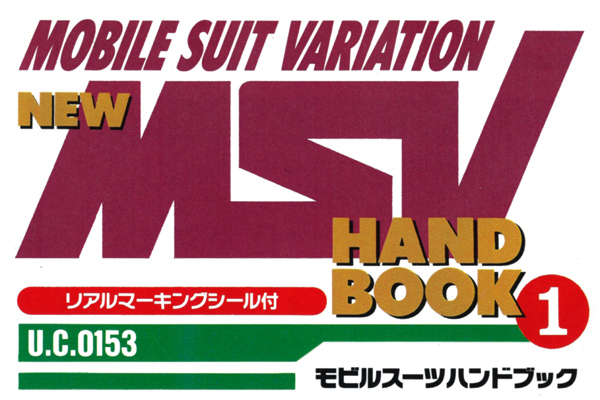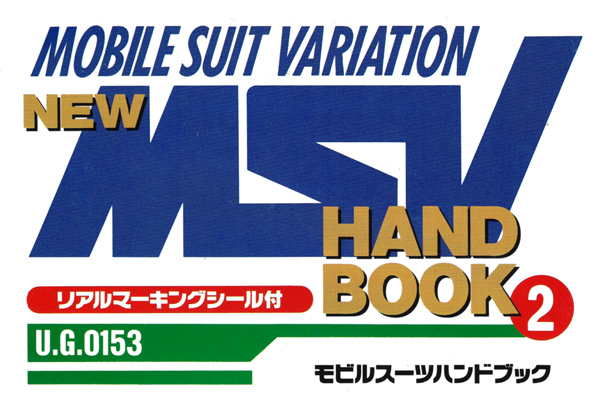THE AFRICAN FRONT
アフリカ戦線
THE AFRICAN FRONT
![]()
The Principality asserted its dominance through its Earth Invasion Operation, and its influence persisted, particularly in Africa, up to the end. Notably, North Africa was considered a stepping stone to the invasion of Europe, and due to its proximity to the Middle Eastern fossil fuel-producing region, it witnessed fierce artillery exchanges throughout the One Year War.
The military campaign in this region was referred to by the Principality’s army as the “African front,” or the “North African front.” However, the scope of this terminology was not strictly defined, and at its maximum, it encompassed parts of Central Asia and the mid-African continent, fluctuating based on the distribution of both armies’ power.
The primary objective of the Principality’s Earth invasion strategy was to secure strategic resources. The subjugation of Africa aimed to ensure control over the Middle East’s fossil fuel-producing region and the gold and diamond mines on the continent. Hearing about gold and diamonds, many people tend to think of them as resources used to fund the Principality’s military, but these were primarily positioned as strategic resources for use in precision instruments.
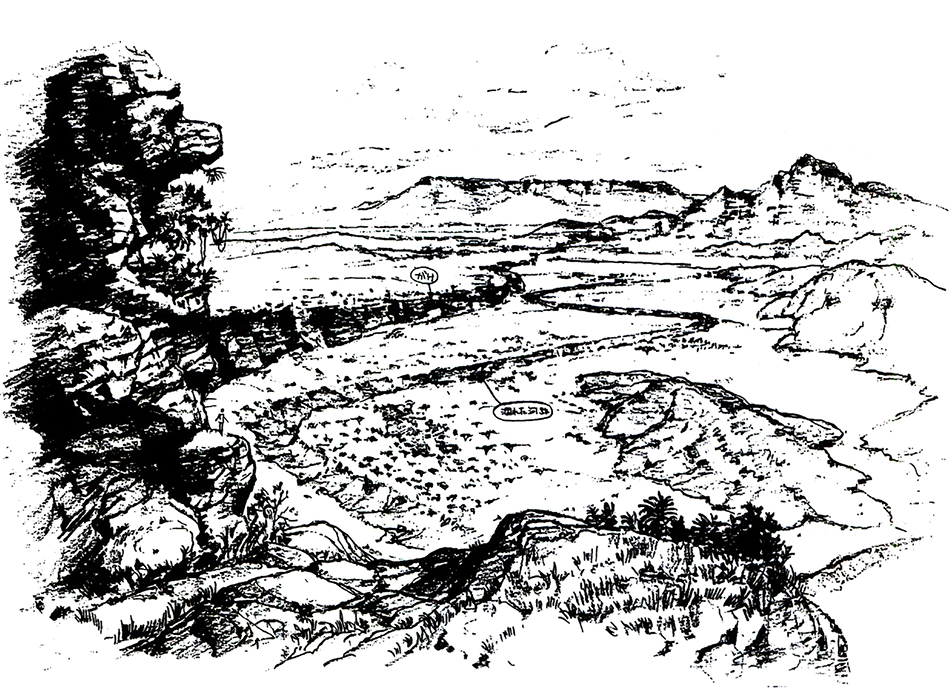
Central Africa. Following the One Year War, many Principality remnants holed up here, carrying out lengthy resistance activities.
This control was initially undertaken by troops who descended in Central Asia during the First Drop Operation. Subsequently, the expansion of power was planned sequentially through the descent of support and supplement units to the Middle East (either during the Second Drop Operation or the arrival of the reinforcement units on April 4, UC 0079, as some accounts suggest). These supplementary units, often called “Foreign Units,” were composed of Spacenoids who moved to the Principality just before the war broke out. They were frequently deployed in intense combat zones and special assignments, and following the tradition, the battles in the Red Sea and the Persian Gulf in the Middle East, where they landed, were extremely fierce. These zones were among the most contentious throughout the One Year War.

Killer Bee. The marking observed on the unit that participated in operations in the southern region of the Middle East. Despite post-war investigations, specific details such as the unit’s name remain unknown. However, it is believed that they operated MS-06D.
In the actual subjugation, the Principality’s army adopted a strategy to gain control from the air. The Principality’s aircraft weren’t exactly the best of their kind. However, they were sufficient to overwhelm the Federation Forces Air Force, which were struggling to cope with the confusion in command structure after the colony drop and the tactics involving the scattering of Minovsky particles. Furthermore, with the capture of the California Base, the Principality’s army started using three-dimensional tactics of airlifting and dropping mobile suits (MS), thanks to the mass production and deployment of Gaw-class attack aircraft carriers.
Initially, the Principality’s invasion was forced to a standstill due to the resistance of the Federation’s ground troops. The primary cause was mobility issues, especially movement in the desert was extremely difficult. They had no choice but to use large ground warships and medium transport aircraft, which required considerable effort in deploying their forces. Given the descent from orbit, the Principality’s army was never in an abundant situation materially.
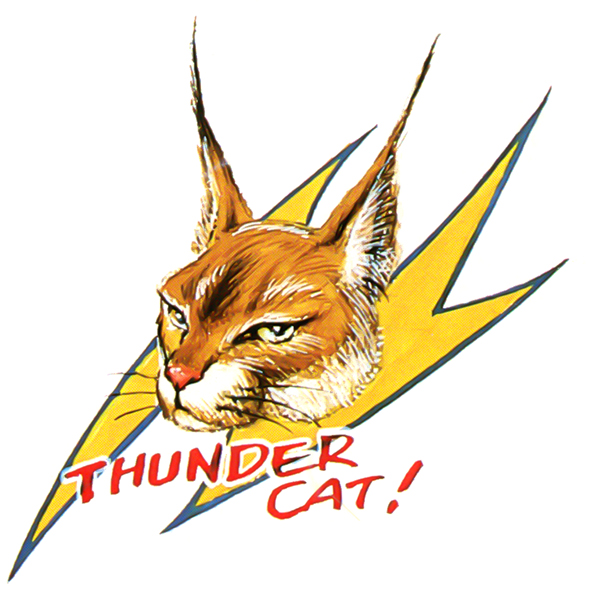
The emblem of the unit belonging to the Alexandria Base, though its unit name remains unknown. It is said that the unit was comprised of MS-07. However, the name “Thunder Cat” inscribed on the emblem is identical to the one attached to Commander Roy Greenwood’s YMS-09D.
To address this, they coordinated with the aforementioned Gaw-class attack aircraft carrier, and also modified the MS-06J Zaku II J-type into MS-06D Zaku Desert Type, enhancing mobility in the desert. They also introduced the MS-09 Dom series of mobile suits, capable of high-speed ground movement using a thermonuclear hover technology, in the middle of the war. Regarding the supply side, they used the power unit part of the Samson (Samson top), which was intended for mobile suit transport and could hover, and modified it to create high-speed transport vehicles for desert use.
The Principality’s army’s main base on the African front was near the Mediterranean, in Alexandria. Gaw-class attack aircraft carriers were deployed here, and the 5th Ground Mobile Division of the Earth Theater Forces was stationed.
Given that it was a fierce battleground, there were many units and ace pilots in this region that made the Federation shudder at the sight of their aircraft markings alone. Especially famous were the units of Lieutenant Commander Rommel, referred to as the “Ace of Africa,” and the “Caracal” squad led by Commander Roy Greenwood. Lieutenant Colonel Rommel was known for shouting for thorough resistance even after the war ended, hiding underground, and engaging in a guerrilla battle against the Federation that lasted for eight years. He participated in the FLN (African National Liberation Front), which rose in response to the Neo Zeon Army’s descent to Earth in 0088, and died in battle. Known as “Desert Rommel,” he had MS-09G Dowadge as his final machine during the late war period (later, this machine was modified to MS-09H Dowadge Custom).
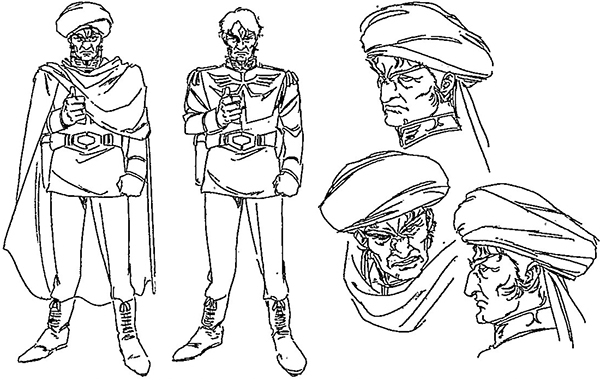
Lieutenant Commander Rommel. This illustration depicts him during the first Neo Zeon War in U.C.0088. At that time, he piloted a customized MS-09H, which was based on the MS-09G. As a side note, during the One Year War, it is said that he also customized an MS-06D and piloted it as the MS-06DRC.
The Caracal unit, also known as the Caracal Corps due to its platoon-based structure, operated in the area from the Libyan Desert to the western bank of the Suez Canal. They repeatedly launched guerilla-style surprise attacks against the Federation Forces, who were attempting a counteroffensive. Their contribution was significant in preventing the Federation’s attempt to recapture the Suez Canal, particularly after Operation Odessa and up until the African mop-up operation (this battle, centered around Egypt, is known as the Suez Defense). The Caracal unit was said to have been equipped with a single YMS-09D Dom Tropical Test Type, which they used to gather combat data.
The “Pink Panther” unit, though not known for having any ace pilots, is also recognized for its accomplishments. The Pink Panther unit was known for being early recipients of the MS-06D, and they dominated the area from the Sahara Desert to the Strait of Gibraltar, establishing a foothold for the invasion of Europe.
The Principality’s invasion of Europe took place in the middle stage of the One Year War, and they achieved territorial dominance as far as Southern Europe. Among the units participating in the mop-up operations, the 29th Armored Squadron of the third mop-up operation is known. However, this dominance was short-lived, and they were pushed back to the opposite shore of the Mediterranean just before the Battle of Odessa.
The initial mobile suits on the African front were space combat specification MS-06F Zaku F-type (deployed in the First Drop Operation), but these were later overhauled and converted into land combat-specific MS-06J Zaku. The J type supported the early stages of the African front in cooperation with the Magella Attack combat vehicle, but due to the aforementioned mobility problems, the battle results were not particularly significant.
From mid-phase onward, the MS-06D made significant achievements, compensating for the slow establishment of the mass-production MS-09 units. There are also records of the MS-07 Gouf being deployed. The deployment of the MS-09 series began in mid-November, and it is said that they were deployed in the Middle East after the Suez Defense Battle.
With the defeat at the Battle of Odessa in early November, the Principality’s forces were mopped up in Europe. Many remnants of these defeated units flowed into the African front with the aid of the Principality’s submarine fleet (The transportation and evacuation cover from the Mediterranean to Alexandria was handled by the “Red Dolphin” submarine fleet. This operation was called the Mediterranean Landing Invasion Operation and continued until the Federation conducted anti-submarine patrols from the Black Sea to the Mediterranean. The MS-06M underwater Zaku was said to be deployed in this operation, but this has not been confirmed).
By the end of the month, the morale to recapture Europe was high among the combined units. Around this time, the African front units deepened their collaboration with the Principality’s submarine fleet. It is well-known that when Captain Char Aznable of the “Mad Angler” squad confirmed the White Base Corps at the Federation’s Belfast base in Northern Ireland, he had spies ascertain whether its strength would head to the African front. He wiped out the Federation’s Navy in the Atlantic while watching the progress of the African front and covering this front from the flank. In the African cleansing operation launched by the Federation in December, it is famous that Commander Erich Hartmann of the 20th Submarine Fleet made efforts to stop the Federation’s landing fleet heading from the east coast of Africa.
The collaboration between the Principality’s submarine fleet and the units on the African front continued even after the end of the war. It was recently revealed that during the Delaz Conflict in 0083, the U-801 transported Commander Anavel Gato, who escaped from the Torrington base on the Australian continent, to the Kimberlite base in Africa.
During the Federation’s African mop-up operation on December 5, at the end of the One Year War, many new and refurbished mobile suits were confirmed to be deployed. These included MS-09F/TROP Dom Tropen, MS-09G and other derivative machines of Dom, later models of the Zaku series such as MS-06FZ Zaku II Kai, MS-06F-2 Zaku II F2 type, and even the ground combat version of MS-14 Gelgoog. Africa was the foothold for the counterattack on Europe, and the seriousness of the Principality’s commitment is evident from this deployment situation.
However, the Federation conducted operations with a force equivalent to 20 times that of the Principality, especially aiming to annihilate the ground forces with overwhelming air power. The Principality’s African front, which initially sought to expand its power by securing air superiority, had only a very small air force at this stage (it is believed to have lost a large number due to support from the African front to the Battle of Odessa and the Jaburo landing operation).
The units that made up the African front followed the path of retreating to the spaceport at the Aden base in the Middle East or being annihilated by stubborn resistance. By the middle of December, the African front had collapsed. Along with North America, which had been recaptured earlier, the Principality’s organized forces on the ground were wiped out, leaving only a few units continuing guerrilla warfare.
![]()



